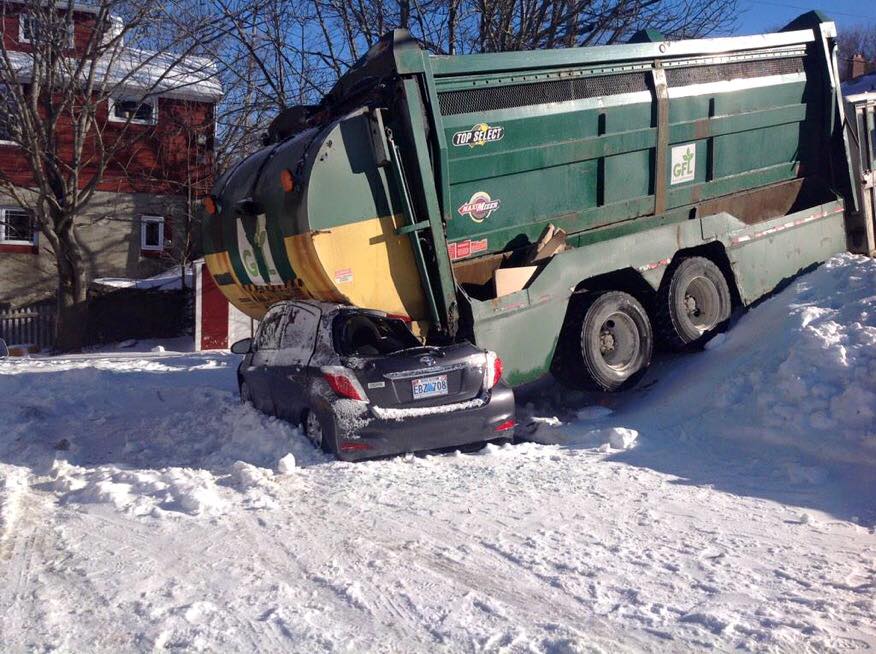Spot The Safety Violation: Slip Sliding Away
What could the driver of this garbage truck have done to avoid ending up in this position’

In the winter, snow and ice can make the road surfaces slippery. So it’s critical that your workers know how to safely drive in these conditions if driving is part of their job. Otherwise, they can get into traffic accidents and injure themselves or others on the road.
This picture shows the aftermath of a garbage truck’s backwards slide down an icy road in Dartmouth, NS. The truck also hit another car besides the one in the picture. Fortunately, both vehicles were empty and no one was injured.
5 Black Ice Tips
One of the biggest’and hardest to detect’dangers on winter roads is black ice. This glaze forms on surfaces, such as roads and sidewalks, because of a light freezing rain or because of the melting and re-freezing of snow, water or ice. And although it’s actually clear, it’s called ‘black’ ice because it tends to look like the rest of the pavement.
Black ice is so hazardous because a surface covered in it may simply appear to be wet and so drivers may not exercise added caution when encountering it. Black ice is even more dangerous at night when it’s nearly impossible to see.
So if your workers drive on the job, you should implement a winter driving policy, which covers what to do when encountering various driving hazards, including black ice. For example, include these five safety tips regarding black ice from the Minnesota Departments of Transportation and Public Safety:
1. Be aware that black ice is almost invisible.
2. Be especially careful on bridges, overpasses and tunnels and in early morning when the air temperature is rising faster than the pavement temperature.
3. Never brake while driving on ice. Applying pressure to your brakes while on ice will cause your vehicle to skid. Brake only during your approach. (Show workers this video on winter driving tips on braking.)
4. Keep your distance. The distance needed to stop on ice is twice as long as under normal driving circumstances. Keep at least a three-car distance from the vehicle directly in front of you.
5. Although salting and sanding can neutralize black ice, be aware that salt loses its effectiveness at about -9.4ø C/15ø F or colder.